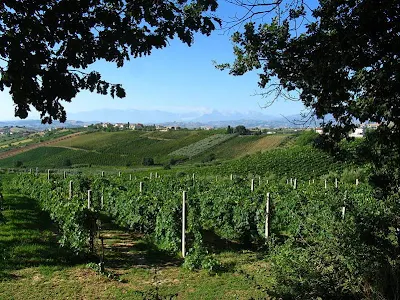vAglianico - Considered the "noble varietal of the south," it is primarily grown in Campania and Basilicata. The name is derived from Hellenic, so it is considered a Greek transplant. Thick skinned and spicy, the wines are often both rustic and powerful.
v Sagrantino - A native to Umbria, it is only planted on 250 hectares, but the wines produced from it (either blended with Sangiovese as Rosso di Montefalco or as a pure Sagrantino) are world-renowned. Inky purple, with rustic brooding fruit and heavy tannins, these wines can age for many years.
v Malvasia Nera - Red Malvasia varietal from Piedmont. A sweet and perfumed wine, sometimes elaborated in the passito style
vTocai Friulano - A varietal distantly related to Sauvignon Blanc, it yields the top wine of Friuli, full of peachiness and minerality. Currently, there is a bit of controversy regarding the name, as the EC has demanded it changed to avoid confusion with the Tokay dessert wine from Hungary.
v Ribolla Gialla - A Slovenian grape that now makes its home in Friuli, these wines are decidedly old-world, with aromas of pineapple and mustiness.
v Arneis - A crisp and floral varietal from Piedmont, which has been grown there since the 15th century.
v Malvasia Bianca - Another white varietal that peeks up in all corners of Italy with a wide variety of clones and mutations. Can range from easy quaffers to funky, musty whites.
v Pigato - A heavily acidic varietal from Liguria, the wines are vinified to pair with a cuisine rich in seafood.
vFiano (wine) - Grown on the southwest coast of Italy, the wines from this grape can be described as dewy and herbal, often with notes of pinenut and pesto.
vGarganega - The main grape varietal for wines labeled Soave, this is a crisp, dry white wine from the Veneto wine region of Italy. It's a very popular wine that hails from northeast Italy around the city of Verona. Currently, there are over 3,500 distinct producers of Soave



